Crimping tool are essential in various industries and DIY projects, providing a secure and reliable connection between wires and connectors. Also Visit
What is a Crimping Tool?
A crimping tool is designed to attach connectors to wires or cables by deforming one or both components. This deformation creates a secure connection that ensures proper electrical conductivity or mechanical stability. These tools are widely used across various applications, from electrical wiring to automotive and telecommunications.
Crimping involves pressing two materials together to form a permanent connection, ensuring a tight fit and minimal electrical resistance or mechanical movement. Read More
Table of Contents
- What is a Crimping Tool?
- How to Choose the Right Crimping Tool
- How to Use a Crimping Tool
- Best Practices for Using Crimping Tools
- Common Applications of Crimping Tools
- Troubleshooting Common Issues
- Latest Advancements in Crimping Technology
- Conclusion
- FAQs
Types of Crimping Tools
1. Manual Tools
Manual crimpers are commonly used and operated by hand, with different die sets to accommodate various connector sizes and types. They are suitable for small to medium-sized cables and connectors.
- Wire Crimpers: Designed specifically for crimping electrical wires to connectors. They often come with interchangeable dies for handling different wire gauges and connector types, making them versatile for various tasks.
- Insulated Crimpers: Used for connectors requiring insulation, such as insulated terminals and splices. This insulation protects the connection from environmental factors and electrical interference.
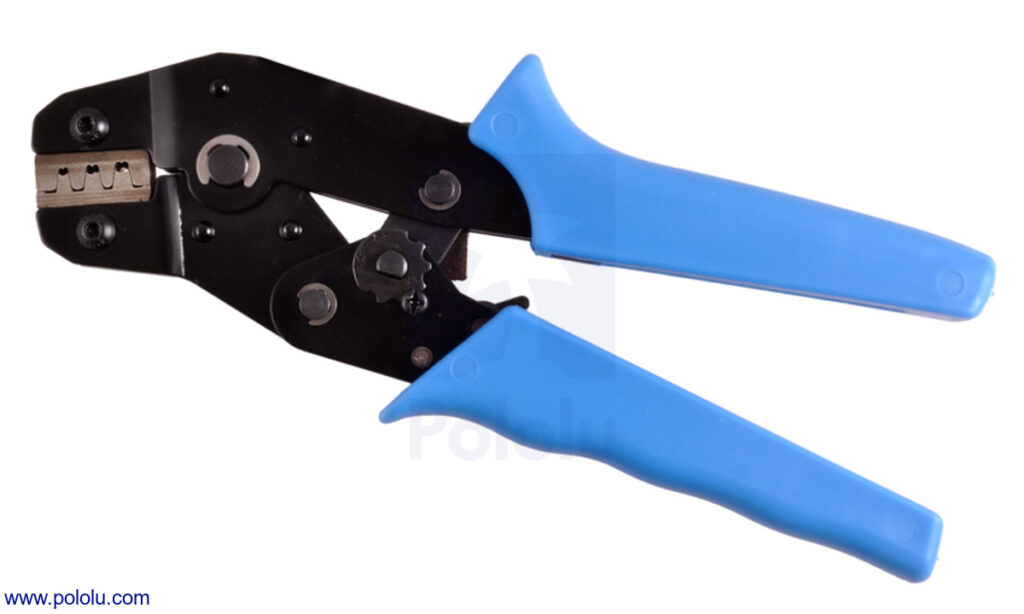
How to Use Manual Crimping Tools
2. Hydraulic Tools
Hydraulic crimpers use hydraulic pressure to assist in crimping, ideal for larger cables and connectors. They are particularly useful for heavy-duty applications where manual tools might not be sufficient.
- Battery-Operated Hydraulic Crimpers: Offer convenience and portability, suitable for fieldwork where electrical power isn’t readily available. They are designed for ease of use and mobility.
- Pneumatic Hydraulic Crimpers: Utilize compressed air for operation, making them suitable for high-volume crimping in industrial settings. Pneumatic models are known for their efficiency and consistency.
The Advantages of Hydraulic Crimping Tools
3. Ratchet Tools
Ratchet crimpers feature a ratcheting mechanism that ensures consistent pressure and proper crimping. They only release when the crimping cycle is complete, reducing the chance of inconsistent results.
- Heavy-Duty Ratchet Crimpers: Designed for crimping larger gauge wires and connectors. They are built to handle tougher tasks and deliver reliable results in demanding applications.
- Precision Ratchet Crimpers: Ideal for smaller connectors and delicate applications, offering greater control and precision for intricate crimping tasks.
Choosing the Right Ratchet Crimping Tool
4. Specialized Tools
Specialized crimpers are designed for specific applications or types of connectors, offering tailored functionality.
- Coaxial Cable Crimpers: Used for crimping connectors onto coaxial cables, common in telecommunications and broadcasting. These tools ensure a proper fit and secure connection for high-frequency signals.
- Modular Plug Crimpers: Specifically used for crimping connectors onto telephone and Ethernet cables, such as RJ45 and RJ11. They are essential for networking and telecommunication tasks.
Coaxial Cable Crimping Tool Guide
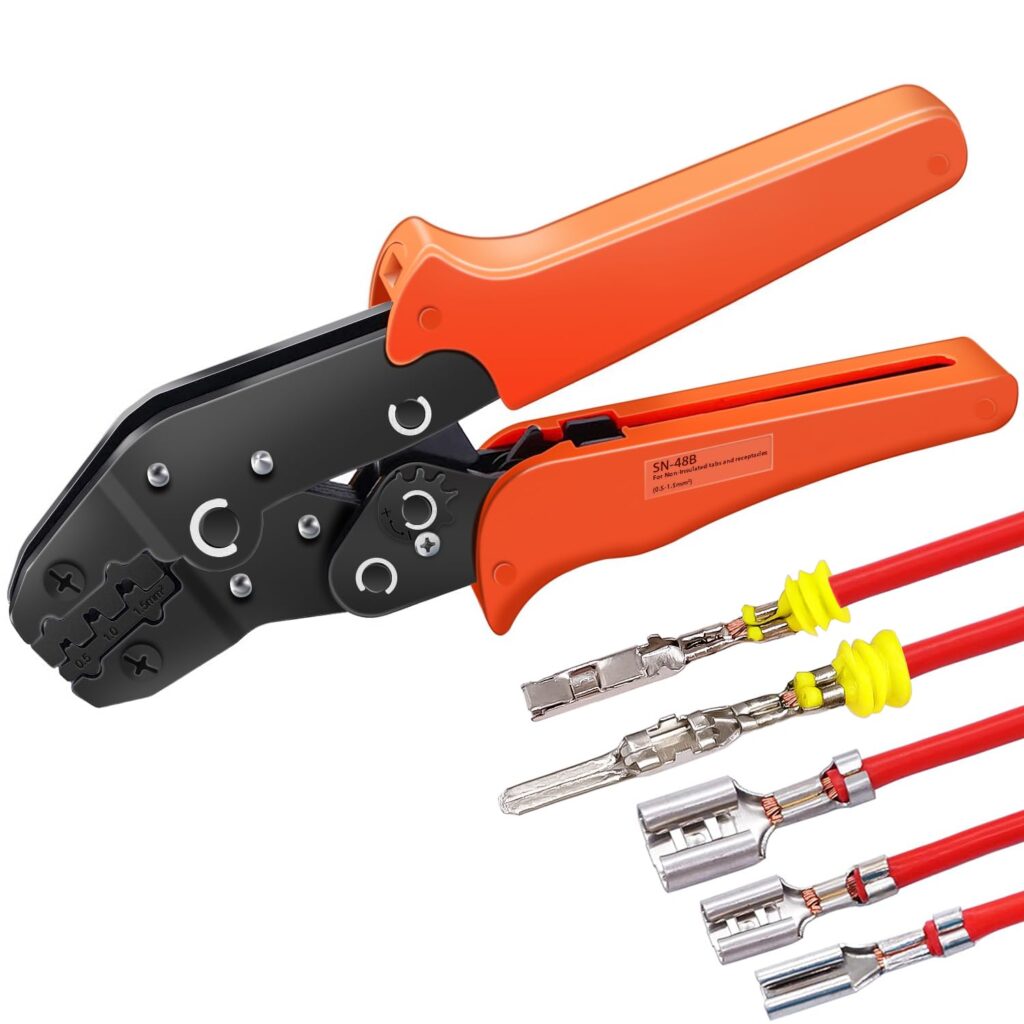
How to Choose the Right Crimping Tool
Selecting the right crimping tool involves considering several factors, including the type of connectors, wire gauge, and frequency of use. Here’s how to make an informed choice:
1. Connector Type and Size
Different tools are designed for specific connector types. Ensure that the tool you choose is compatible with the connectors you plan to use. Verify that the dies or crimping cavities match the connector types you need.
2. Wire Gauge
Tools come with various die sizes to handle different wire gauges. The die size must match the wire gauge for a proper crimp. Using a die that is too large or too small can affect the connection’s reliability.
3. Frequency of Use
For occasional use, a manual tool might be sufficient. For frequent or heavy-duty crimping tasks, consider a hydraulic or ratchet model. Hydraulic tools are ideal for high-volume work, while ratchet tools provide consistent pressure and ease of use.
4. Ergonomics and Comfort
For frequent use, choose a tool with ergonomic features such as cushioned handles and an adjustable ratchet mechanism. These features help reduce hand strain and improve comfort.
Selecting the Right Crimping Tool
How to Use a Crimping Tool
Effective use of a crimping tool is essential for achieving a strong connection. Follow these steps:
1. Prepare the Wire
Strip the insulation from the end of the wire to expose the metal conductor. Ensure the length of exposed wire matches the connector’s specification. Avoid nicking or damaging the wire strands, as this can affect the connection’s reliability.
2. Select the Correct Die
Choose the die size that matches the wire gauge and connector type. Most crimping tools come with interchangeable dies, so select the appropriate one for your task.
3. Insert the Connector
Place the connector into the tool’s die or crimping cavity. Ensure it is properly aligned and seated to avoid misalignment during crimping.
4. Crimp the Connector
Squeeze the handles to apply pressure. If using a ratchet tool, it will only release when the crimping cycle is complete, ensuring a consistent crimp. For hydraulic tools, follow the manufacturer’s instructions.
5. Inspect the Crimp
After crimping, check the connection to ensure it is secure and properly crimped. The connector should be firmly attached to the wire, with no visible gaps or looseness. A proper crimp ensures good electrical conductivity and mechanical stability.
How to Crimp Wires and Connectors
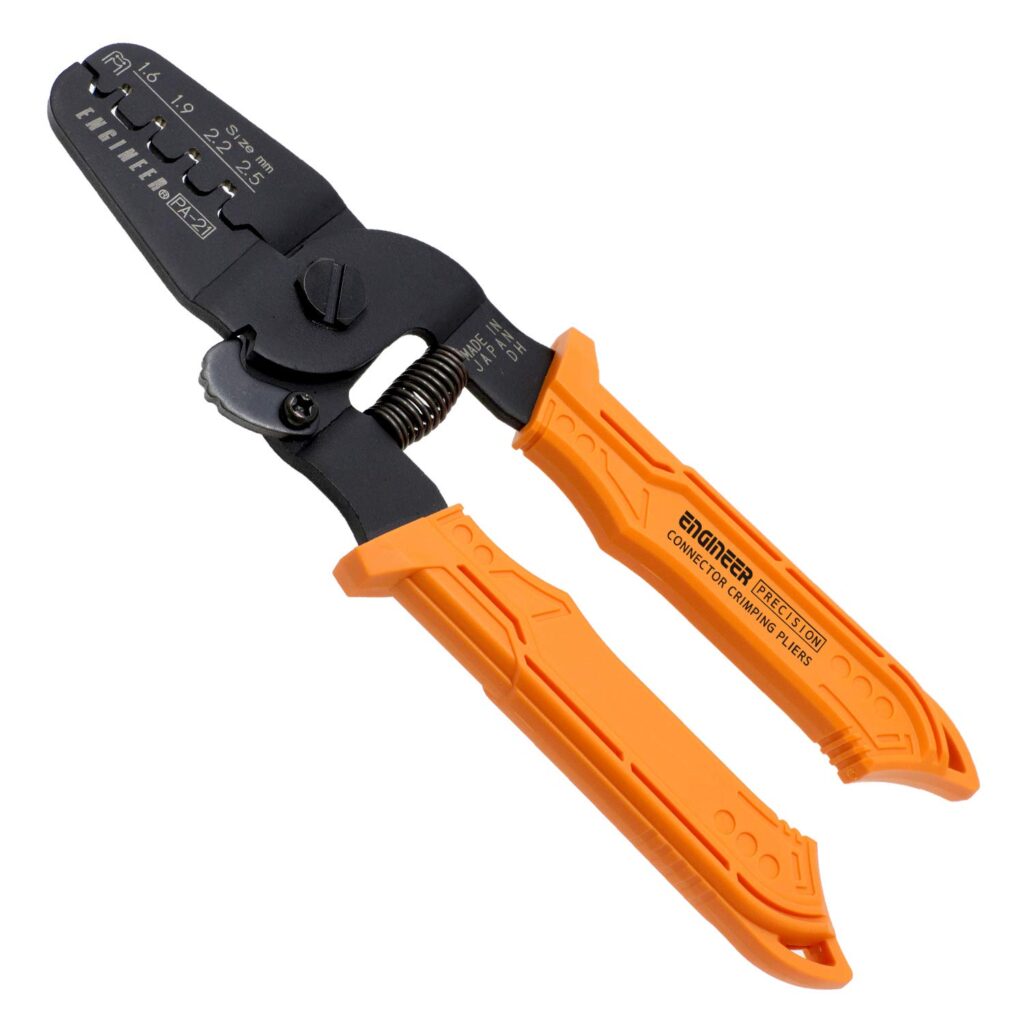
Best Practices for Using Crimping Tools
To achieve the best results and prolong the life of your crimping tools, follow these best practices:
1. Regular Maintenance
Keep your tools clean and well-maintained. Inspect them regularly for signs of wear or damage, such as dull dies or loose components. Address any issues promptly to ensure proper functioning.
2. Use the Right Tool for the Job
Always use the tool designed for the specific connector type and wire gauge. Using the wrong tool can lead to poor connections and potential failures.
3. Check Tool Calibration
For tools that require calibration, such as ratchet and hydraulic models, ensure they are calibrated according to the manufacturer’s instructions. Proper calibration is crucial for achieving consistent results.
4. Store Tools Properly
Store your tools in a dry, clean place to prevent rust and damage. Use a tool case or rack to keep them organized and protected from environmental factors.
Crimping Tool Maintenance Tips
Common Applications of Crimping Tools
Crimping tools are used in various applications across different industries. Understanding these applications helps in selecting the right tool for your needs.
1. Electrical Wiring
Crimping tools are used to attach connectors to wires, ensuring a reliable and secure electrical connection in residential, commercial, and industrial installations. They help create durable connections that can handle electrical currents and prevent short circuits.
2. Automotive
In the automotive industry, crimping tools are employed for electrical connections in wiring harnesses, sensors, and other electronic components. Automotive crimpers are designed to meet the specific demands of automotive wiring, including resistance to vibration and environmental conditions.
3. Telecommunications
These tools are crucial in telecommunications for connecting cables to connectors like RJ45 and RJ11. Proper crimping ensures a stable connection for networking and telephony systems, contributing to reliable data transmission and communication.
4. DIY Projects
For DIY enthusiasts, crimping tools are handy for various home improvement and repair projects. They can be used to create custom cables, repair electrical connections, and handle small-scale wiring tasks. The right tool can make DIY electrical work more efficient and professional.
Applications of Crimping Tools in Different Industries
Troubleshooting Common Issues
Even with the best tools and practices, issues may arise. Here are some common problems and their solutions:
1. Loose Connections
Loose connections may result from using the wrong die size or insufficient crimping force. Double-check that the die matches the wire gauge and apply adequate pressure during crimping. A loose connection can cause intermittent electrical issues or mechanical failures.
2. Damaged Wires
Damaged wires can occur from incorrect insulation stripping or nicking during preparation. Use the appropriate stripping tool and technique to avoid damaging wire strands. Damaged wires can compromise the crimp’s integrity and affect performance.
3. Improperly Seated Connectors
If connectors are not properly seated in the tool’s die, it can lead to an uneven or incomplete crimp. Ensure that the connector is correctly aligned
and seated before applying pressure. Misalignment can cause the connector to be loose or improperly crimped.
Crimping Tool Troubleshooting Guide
Latest Advancements in Crimping Technology
The field of crimping technology is advancing, with innovations aimed at improving efficiency and precision. Here are some of the latest trends:
1. Smart Crimping Tools
Smart crimpers come with electronic sensors and digital displays that provide real-time feedback on the crimping process. These tools can monitor pressure, track usage data, and alert users to any issues, helping ensure consistent and accurate results.
2. Enhanced Ergonomics
Modern crimpers are designed with enhanced ergonomics to reduce hand strain and improve comfort during extended use. Features such as adjustable handles and cushioned grips contribute to a more comfortable experience.
3. Advanced Calibration Systems
Advanced crimpers feature built-in calibration systems that automatically adjust crimping force for precise results. These systems help maintain consistent quality and reduce errors, especially in high-volume applications.
4. Multifunctional Tools
Some new crimpers offer multifunctionality, combining features like wire stripping, cutting, and crimping in a single tool. This versatility can be useful for users who need to perform multiple tasks with one device.
Innovations in Crimping Technology
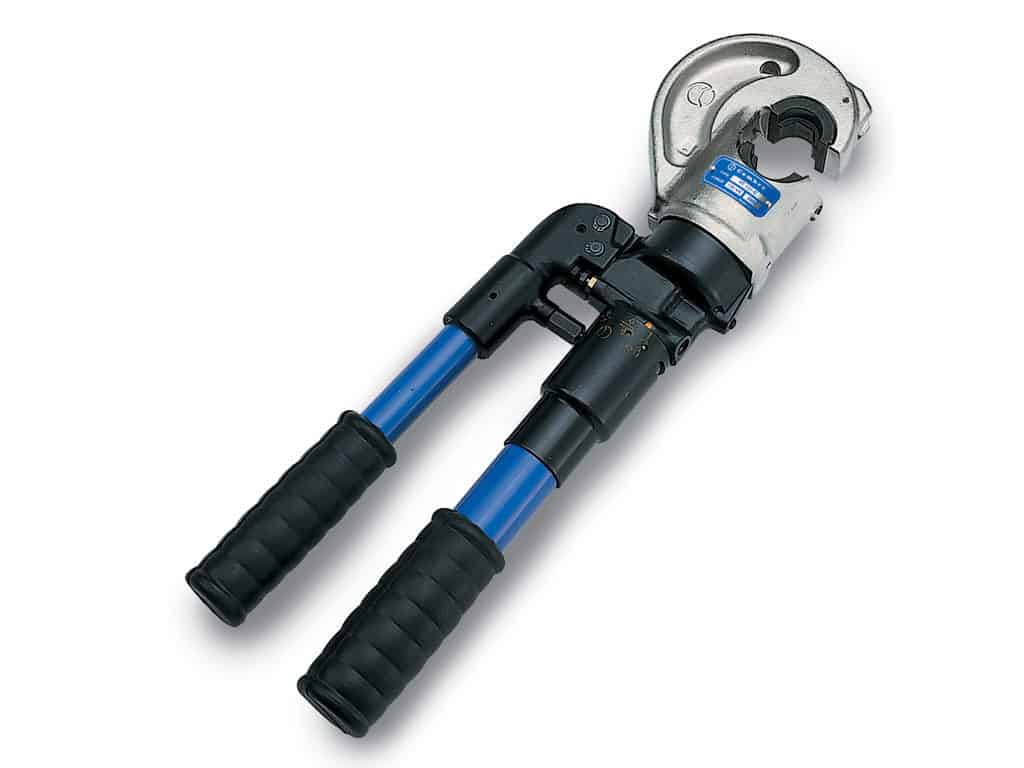
Conclusion
Crimping tools are vital for creating reliable and secure connections across a range of applications. By understanding the different types, selecting the right tool, and following best practices, you can achieve optimal results. Regular maintenance, proper use, and staying updated on technological advancements will ensure that your crimping tasks are efficient and professional.
Whether working on electrical wiring, automotive repairs, telecommunications, or DIY projects, the right tool can make a significant difference. Following the guidelines and tips in this guide will help you ensure that your connections are strong, durable, and meet the demands of your specific applications.
FAQs
Q1: What is a crimping tool?
A crimping tool is a device used to attach connectors to wires or cables by deforming them into a secure and stable connection. This process involves squeezing the tool’s handles to compress the connector onto the wire, ensuring electrical conductivity or mechanical stability.
Q2: What types of crimping tools are available?
Crimping tools come in several types, including:
Manual Crimping Tools: Operated by hand and suitable for various wire gauges and connector types.
Hydraulic Crimping Tools: Use hydraulic pressure for heavy-duty applications and larger cables.
Ratchet Crimping Tools: Feature a ratcheting mechanism for consistent pressure and crimping quality.
Specialized Crimping Tools: Designed for specific connectors, such as coaxial cables or modular plugs.
Q3: How do I choose the right crimping tool?
To select the right crimping tool, consider the following factors:
Connector Type: Ensure the tool is compatible with the connectors you plan to use.
Wire Gauge: Choose a tool with the appropriate die size for the wire gauge.
Frequency of Use: For occasional use, a manual tool may suffice. For frequent or heavy-duty tasks, consider hydraulic or ratchet models.
Ergonomics: Look for features like cushioned handles and adjustable mechanisms if you will be using the tool frequently.

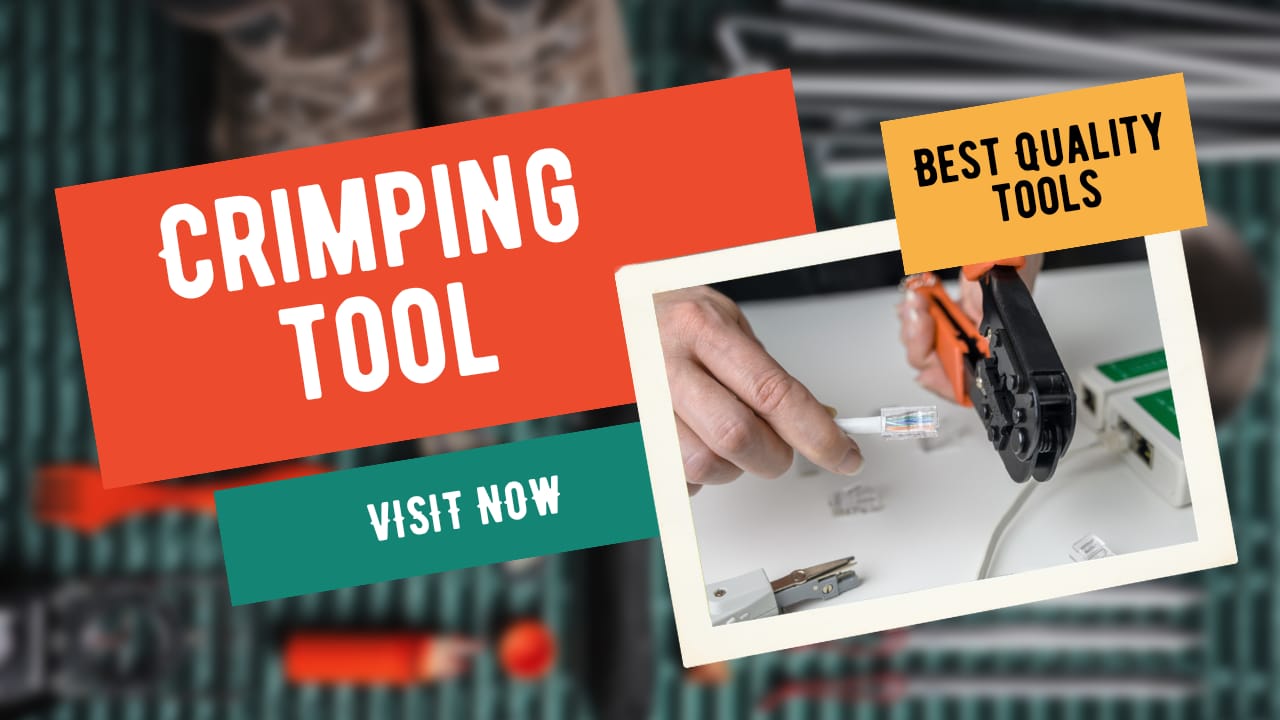
I am genuinely thankful to the owner of this website for sharing his brilliant ideas. I can see how much you’ve helped everybody who comes across your page. By the way, here is my webpage Webemail24 about Search Engine Optimization.